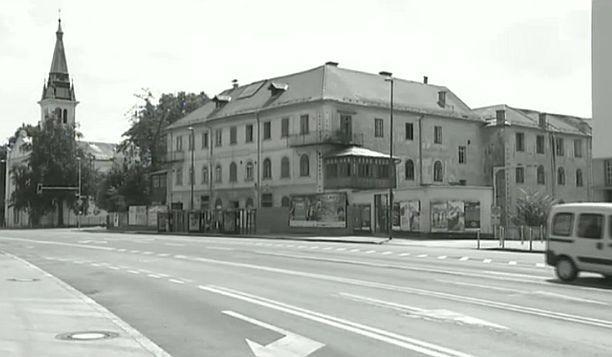
For generations, a building known as Kolizej dominated a large part of central Ljubljana. Built as a military barracks in Hapsburg times, it later served various purposes before being torn down in 2011 – a decision that remains controversial to this day.
The structure was built in 1848 and got is name from the Coliseum in Rome. The moniker was appropriate: Event though its architecture was an unremarkable blend of styles fashionable at the time, Kolizej stood out because of its sheer size. It was, by a substantial margin, the largest building in Ljubljana. The construction of a modern military barracks was welcomed by the people of Ljubljana, who had previously been forced to quarter soldiers in their own homes. In the new building, ordinary soldiers slept on bunk beds, while officers had their own apartments. Kolizej also included horse stables, a riding school, a restaurant, and a cafe.
In 1895, Kolizej was badly damaged by an earthquake that destroyed large swathes of Ljubljana. A part of the building had to be torn down, but by that time, Kolizej was no longer important for the army. Instead, the building became the home of various workshops, a wine store, a liquor factory, and eventually even the Slovenian Fine Artists’ Association joined the building’s tenants.
When Communists came to power in the wake of World War II, most of Kolizej was turned into public housing. Because of a lack of investment, the condition of the apartments deteriorated over the years, and the building finally became a refuge for the very poor. In 1995, three people died when a part of the structure collapsed.
In 2011, Kolizej was torn down. The controversial move had been planned for some time: In the preceding years, the area occupied by the dilapidated building had become highly sought-after real estate. Briefly, conservationists tried to protect the old building by having it declared a Cultural Monument, but the protection was eventually lifted, and Kolizej met the wrecking ball. The investor promised to include an opera hall in the replacement project, but those plans were eventually shelved, and the site will now, in all likelihood, be the location of luxury housing development.
Regardless of the ultimate fate of the site, one thing remains certain: Many people in Ljubljana already miss the often-overlooked building that had played a surprisingly important role in the development of their city.

































































